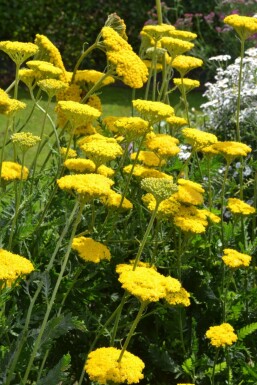
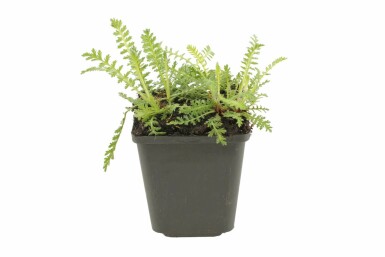


The Achillea, commonly known as yarrow or milfoil, is a herbaceous perennial that boasts a spectacular range of flower colors, from the softest whites and pinks to the most vibrant yellows, oranges, and reds. This plant is not only admired for its colorful display but also for its fine, feathery foliage that comes in hues of green to grey, adding texture and contrast to any garden setting. Originating from the picturesque landscapes of Southwestern Europe to Central Italy, Achillea is a true gardener's delight, offering a tapestry of colors that can enliven any planting scheme.




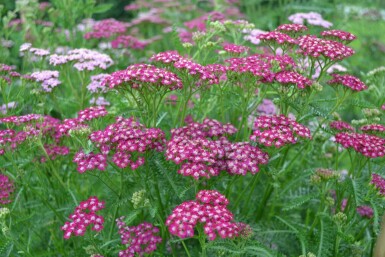
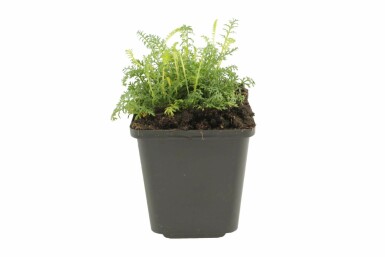










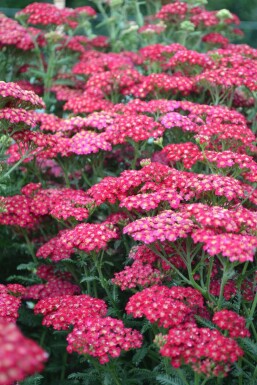
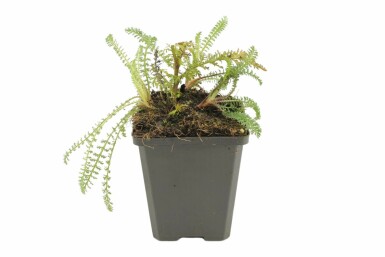
60cm


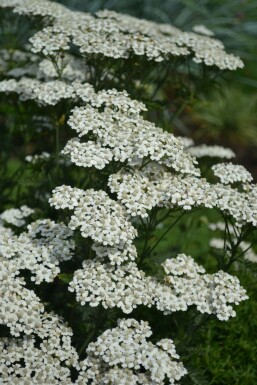
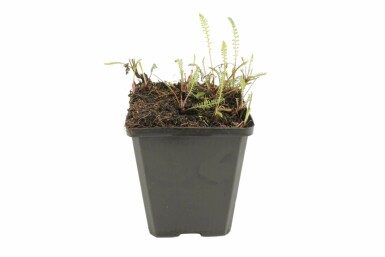
60cm


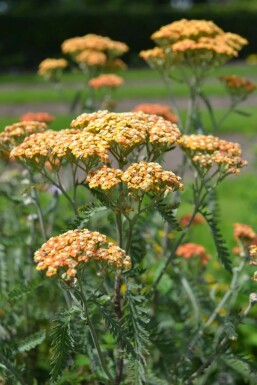
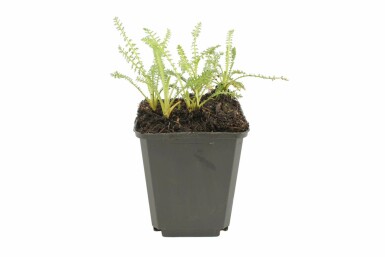





80cm





70cm




25cm



The Achillea genus, commonly referred to as yarrow or milfoil, is a group of flowering plants that are as hardy as they are beautiful. With their diverse palette of flower colors ranging from warm yellows to deep purples, they are a favorite among gardeners looking to add a splash of color to their borders, group plantings, or edges.
Native to the regions of Southwestern Europe through to Central Italy, these versatile plants are known for their resilience and ability to thrive in a wide range of soil conditions, provided they are well-drained.
Achillea plants are a remarkable addition to any garden due to their striking foliage and bountiful blooms. Let us explore some of the key features that make them stand out:
Embrace the allure of Achillea, a genus celebrated for its feathery foliage and vibrant flower clusters that create a tapestry of color throughout any garden. With its resilience and graceful beauty, this plant is a favorite among gardeners seeking to add a touch of the wildflower meadow aesthetic to their landscape. Its blooms not only enchant the visual senses but also invite a diverse range of pollinators, establishing a lively and dynamic garden environment.
We would like to provide some tips on how to plant and care for a Achillea. By following these tips, you can be sure to enjoy your Achillea for a long time.
For optimal growth and vibrant floral displays, Achillea thrives best in a location that receives full sun to partial shade. These hardy perennials are not fussy about soil type; however, well-drained soil is crucial to prevent waterlogging and promote healthy roots. The site should be open and receive ample sunlight for the majority of the day, ensuring that the myriad of flower colors—from yellow to pink—are showcased in all their glory throughout the blooming months. Their adaptability makes them suitable for a variety of garden uses, from borders to group plantings.
Planting Achillea requires selecting a site with full sun to partial shade and ensuring the soil is well-drained to accommodate its diverse range of soil type tolerance. These perennials thrive in a variety of conditions, but they particularly favor a sunny spot where they can bask in natural light. When planting, space the pots adequately to allow for their spreading habit and optimal air circulation. The root system, already established due to pot cultivation, will quickly adapt to the new environment with regular watering after planting. For robust growth and a vibrant display of its variously colored blooms, plant Achillea during the cooler months of spring or autumn.
To ensure the vibrant and prolonged flowering of Achillea, a balanced approach to fertilization is advisable. These hardy perennials thrive with a moderate level of nutrients, which can be provided by applying a general-purpose fertilizer in the early spring. This initial feed will help to kickstart their growth as they emerge from their dormant state.
Subsequent feeding is not typically necessary, as Achillea are relatively low-maintenance and can prosper in less fertile conditions. However, if growth appears to be lacklustre or if the plants are being grown in particularly poor soils, a second application of fertilizer during the early summer can be beneficial. This will support their lush foliage and abundant floral display through the blooming months. As with any plant, it is important to follow the recommended rates of application to avoid overfertilization, which could lead to excessive foliage at the expense of flowers.
For Achillea, regular deadheading is beneficial to enhance the plant's appearance and encourage further blooming. As the flowers begin to wilt, remove the faded blooms promptly. This practice not only stimulates new growth but also deters unwanted self-seeding, ensuring that the plant remains tidy within the garden landscape. While Achillea is a low-maintenance species that generally requires no extensive pruning, this simple step can significantly contribute to its vigor and aesthetic value throughout its flowering months.
Achillea thrives with moderate hydration, catering to its average water needs. The preferred watering approach is to allow for a thorough soaking, which encourages deeper root growth and bolsters the plant's drought tolerance. It's essential to ensure the soil is well-drained to prevent waterlogging. In periods of extended dryness, particularly when the sun is most intense, maintain a consistent watering schedule to sustain the lush, vibrant foliage and support the prolific summer bloom. During cooler months, reduce the frequency of watering as the plant's water requirement diminishes.
Achillea's vibrant blooms are renowned for their prolonged display, often lasting from early summer until the first frosts of autumn. This attribute makes them a stalwart presence in the garden, providing a consistent splash of color. Furthermore, these plants are an excellent choice for gardeners looking to create a pollinator-friendly space, as they are highly attractive to bees and butterflies. The feathery foliage of Achillea also adds a unique texture to flower beds and borders, enhancing the visual interest of the landscape.
To maintain vigor and health, division of Achillea is essential, preferably in the spring or autumn. This process revitalizes the plant by removing older, central sections and encouraging robust, new growth. Start by carefully lifting the plant from the soil, then gently separate it into smaller parts, ensuring each division has a portion of the root system. Replant these divisions promptly, spacing them adequately to accommodate future growth. This technique not only rejuvenates the plant but also helps control its spread, keeping it flourishing season after season.
Discover the charms of Achillea, a versatile plant that graces any garden with its vibrant, feathery blooms. Ideal for perennial borders, this species thrives in well-drained soil and full sun, offering a long-lasting display that captivates both gardeners and pollinators alike with its effortless beauty and resilience.
